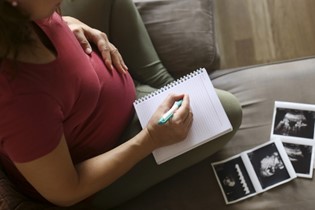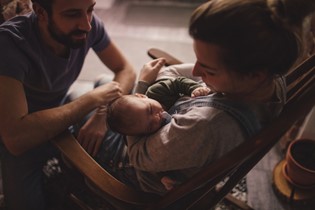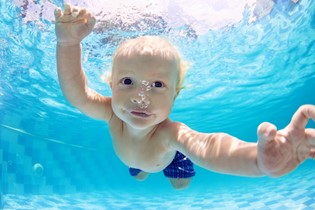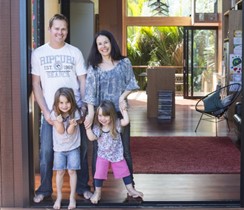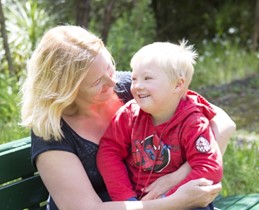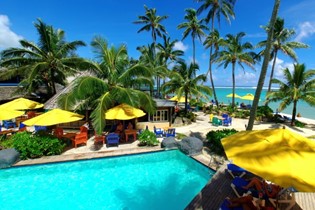Swimming for Babies - Teach Them Young
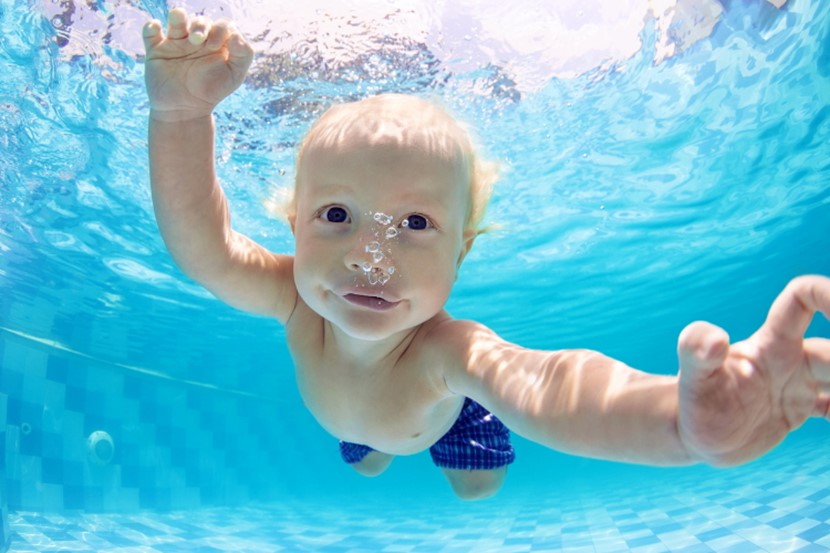
Swimming with baby sets up a life-long love and respect for water, writes Rochelle Gillespie.
Babies spend their first nine months of existence floating around in a pool of warm liquid, so reintroducing them to water is something of an instinctive experience. Have you ever blown air in your baby's face and seen him quickly startle with eyes open and an inhalation of breath? It's an amusing little trick (worth getting out the camera for), and is the very same reflex that causes babies to hold their breath and open their eyes underwater.
It's called the bradycardic response (or diving reflex). It weakens as babies get older, and generally lasts only up to 18 months or two years of age. After that, a child needs to be taught to hold his breath before he submerges, and sadly, the longer you leave it, the harder it can be to create a child who's happy and confident in the water.
Here's a startling fact. Half of all 10 year olds in New Zealand can't swim 25 metres and a quarter of them can't keep afloat. That's a sad indictment on our island nation which is ribboned with rivers, streams and lakes.
Matt Claridge, from Water Safety New Zealand, says we need to rebuild a culture of water safety. He says over recent years, "The school curriculum around swimming has been watered down and there's been a lack of maintenance and upkeep of school pools."
He says from 2020 he expects to see a spike in drowning numbers as those children who were at school when this change happened, reach their early 20s, an age group that features prominently in drowning statistics. This is when young people start getting more adventurous and take up fishing, boating, diving and other activities that may be beyond their swimming abilities.
Matt says until the school curriculum refocuses on water safety, it's up to parents to prioritise teaching a love and respect for water.
New Zealand's drowning rate is serious. It's twice as high as Australia's and three times as high as the UK and USA rates. That's partly why Water Safety NZ is collaborating with regional partners on a swim programme targeting primary school children.
Start them young
A love of water starts with baby's bath time. Begin with some gentle splashing and kicking and get him used to water trickling over his head and face.
Plunket recommends babies be at least six months old before swimming in a public pool. Their immune system will have developed enough to protect them from diseases, they can hold their head up and their ears can cope with water. Their little bodies can also cope with the change in temperature when they get undressed and into the water.
Matt Claridge says ideally all kids would go to formal swimming lessons from about six months of age and he says that would happen for two reasons: "Because Mum and Dad can afford it, and secondly because they know it's important."
Lessons can be costly, so the fees can certainly put a strain on the family finances, particularly if you have more than one child. While an advocate for water safety, Matt is realistic about the costs, but encourages parents to put swimming before all other paid activities, because it is, after all, about survival as well as fun.
Kids physically can't swim until they're around four years old. If you raise a toddler's arms above his head his hands only just reach the top of his head, so his arms won't be very good levers in the water.
Baby and preschool classes are less about learning actual swimming strokes and more about water familiarisation and confidence.
Karla Mccaughan writes the lesson plans for baby and pre-schools classes at the SwimMagic Swim Schools, which currently have around 2000 babies enrolled. She says baby classes start with Mum or Dad (or Grandma or Grandad) in the pool with baby.
Karla says water safety is engrained in every aspect of her babies' classes, beginning with a roll call when children are invited into the pool. Everyone will then join in a welcome song with some gentle splashing: "That's the beginning of paddling movement," says Karla.
There will also be activities that encourage movement through the water, floating on the back and learning that if they fall in the water they should turn around and find the side of the pool.
Submerging under water is an exercise that takes a little more courage from both Mum and baby. Karla says it'll happen only after about two or three lessons. The child learns to wait for a physical cue (being lifted up slightly) and a verbal cue ("James, ready, go.") Once he's mastered that, the next stage is for baby to be pushed through the water from the swimming teacher to Mum or Dad.
Swimming with baby is also a fabulous way to bond. Week-day classes are packed with mums and bubs, but if you visit a swim school on a weekend morning you'll see dozens of dads in the water with their water babies, while Mum waits with the towels poolside.
Matt Claridge says he knows from his own experience that dads do things differently than mums, and when they're in the pool they're more likely to throw the kids around (age appropriately, of course) which can be great for kids' physical development and balance.
What makes a good swim school?
There are plenty of swim schools but they all offer a slightly different swimming programme. Matt says word of mouth is your best recommendation. If you and your child aren't enjoying a particular swim school for whatever reason, then try another one until you find one that suits.
Go along and watch a class in action. He says there are two key things to look for - how much time the teacher spends with each child during a lesson and how much time the children spend "on task", that is actually doing activities rather than just bobbing up and down.
Classes are worked out according to age and ability. They usually feature aquatic names such as "guppies" or "goldfish", "nippers" or "flippers".
Your child will progress as he masters the techniques for each level. If you've been doing regular lessons, then by the time he's over two he should be able to move from front to back and float on his back.
All swimming instructors should hold an appropriate qualification.
Some swim schools demand the use of disposable swimming nappies while others have a policy of no nappies.
Most swim schools should also offer you a free lesson, so you can try them out before committing to regular classes, and many will also offer an assessment of your child's swimming ability so he is put in an appropriate class (this is more relevant to preschool or school-aged kids).
What if your child hates it?
Sometimes kids just hate swimming. You need to be prepared for tears, especially if you're starting lessons with the often fractious preschool set. The first two or three times in the pool, even with Mum or Dad, can be a little frightening. Don't give up after the first, or even second time.
Karla's advice is to take your baby along to a public swimming pool just for fun a few times before you start lessons.
For an older child who's unhappy it can be best for Mum to step away and trust the instructor to do her job. Appreciate that a pool can be a scary environment for a first-timer, it's loud and hot and can be overwhelming. Karla's tip is to make sure you arrive in plenty of time for your lesson, get your child changed then sit for a minute or two poolside to get him settled before the class begins. Most importantly, trust your instructor.
"A dynamic swim instructor has an art for distraction and reading children. Babies can't communicate but still need to be treated with dignity and respect to work out what's going on with them."
But what if the person who hates water is you? When so much of children's beliefs and attitudes are formed by their parents, you will do well to make a concerted effort not to pass that on to your child. As Matt says, "If you can't make it, fake it." Parents need to be enthusiastic and make out that they're enjoying it, even if they're really not.
Swim to survive
Karla says what our over-eager children need to learn above all is hesitation, "so they know not to run into the pool or beach until a big person has told them to do so."
We live in a country that's awash with water. It's what makes growing up as a Kiwi kid so special. It shouldn't be what makes growing up as a Kiwi kid so dangerous.
TOPT TIPS
- Check out the changing facilities. When both you and baby are dripping wet after a swim, you'll want to get changed as quickly and comfortably as possible.
- Family changing rooms are great and, if there's room, take your stroller. If you get baby changed quickly, he can sit up happily in his stroller while you get changed, stopping him from crawling all over a wet floor.
- After-school and weekend lessons can be crazy busy. Mid-week day time classes are great if you're not working. Or if you can juggle your weekends and book a class around the middle of your Saturday then you'll save the hassle of packed car-parks and changing rooms.
- Don't coincide lessons with nap time.
- Schedule enough time to feed baby afterwards, whether it's a breast or bottle feed, or a snack for older ones.
- Get your toddler to have a toilet visit before he gets in the pool.
- Keep lessons to lessons and play time for play time. With one child, you can quite happily do a lesson then head to the complex's wave pool for some fun. But once you have a baby or toddler in tow, this can be more trouble than it's worth.
- You may want to find a swim school at a pool that is solely dedicated to lessons and keep the fun and games for a separate family trip.
- In winter make sure you have a hat and plenty of warm clothes for the trip out to the car. Get water out of ears. Pat dry with the corner of a towel.
- If possible, bring along Grandma or someone else to help look after the kids, it can make all the difference especially if you have both a preschooler and baby having lessons.
Rochelle Gillespie is a mother of three little water-lovers. Her biggest issue with the kids' swimming lessons is trying to find their goggles, which at various times have turned up in the bath, the bed and even on the dog.

AS FEATURED IN ISSUE 20 OF OHbaby! MAGAZINE. CHECK OUT OTHER ARTICLES IN THIS ISSUE BELOW



